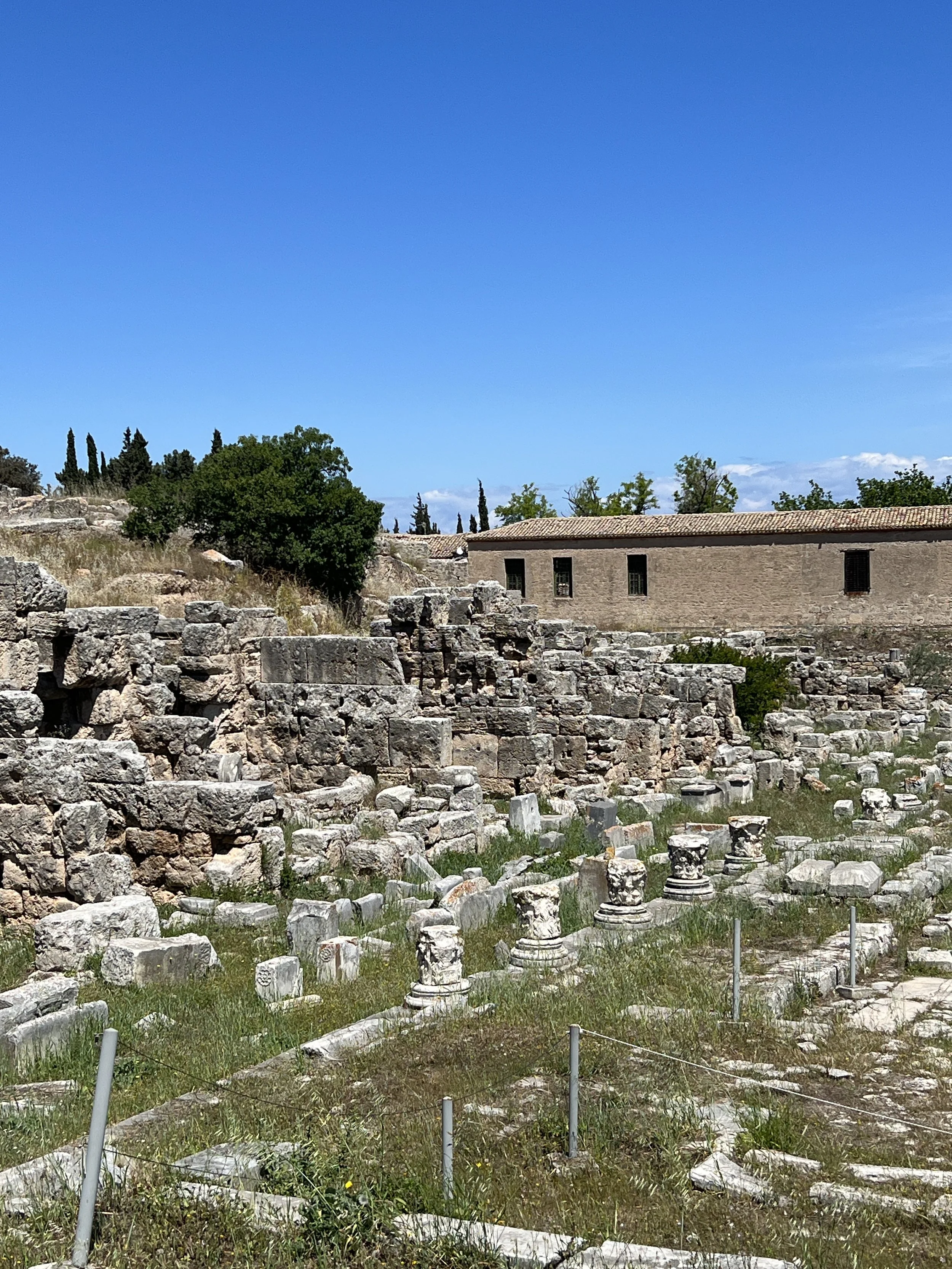Corinth, Greece
“…And many of the Corinthians hearing Paul believed and were baptized. And the Lord said to Paul one night in a vision, “Do not be afraid, but go on speaking and do not be silent, for I am with you , and no one will attach you to harm you, for I have many in this city who are my people. And he stayed a year and six months, teaching the word of God among them.” Acts 18:8-11
We’ve been to Corinth twice and still feel we have missed so much!! It’s a huge site and also has so many interesting features outside of the formal site and visitor’s area.
It’s very easy to imagine Paul and Pricilla and Aquila working in one the many excavated shops repairing leather goods and perhaps living above the shop. The importance of Corinth as a commercial center from the 8th century BC all the way to Medieval times is obvious from the geography. The Bay of Corinth is visible from the site, the Corinth canal is just a few miles away, and there ports on the Saronic Gulf leading to the Aegean Sea and in the west ports on the Gulf of Corinth leading to the Ionic and Adriatic Seas.
It is in Corinth that Paul had to appear before the Roman Proconsul Gallio thus aiding us greatly in establishing dates for Paul’s missionary journey. Gallio we know from Roman records served as proconsul from AD 51 - 52 giving us a good idea of Paul’s time living in Corinth. There is an inscription in the museum at Delphi authored by Emperor Tiberius and speaking of proconsul Gallio.
The temple of Apollo - the most prominent and famous feature of the site - was first constructed in the 7th century BC, repaired in the 6th century BC and the doric columns standing today are from that time.
The Erastus inscription is another famous feature for Christians. Inscribed in the courtyard near the theater, the inscription read “paved by erastus at his own expense in return for his aedileship”. Paul mentions Erastus in Romans 16:23 in connection with Corinth and many feel this is the same person - though of course it can’t be proven.
The museum inside the side is well worth some time. There is some marble architecture from a jewish synagogue. Both times we’ve visited, the marble piece that is inscribed in Greek “synagogue of the Hebrews” from the 5th century AD has been on loan to another museum.
At neither visit did we make it all the way to the top of the acrocorith nor did we get time to visit areas north of the site - several basilicas, the asklepieion, north terrace tombs… we will definitely need to go back again some day!
Corinth Greece - Temple of Apollo




































